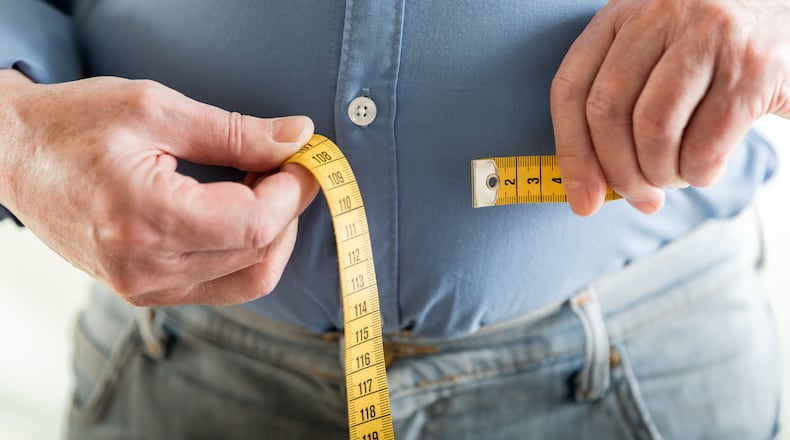Body type
Genetics play a role with regard to body types. Comparatively, you may be of shorter stature with a rounder frame, referred to as endomorph, or tall and lean, referred to as ectomorph. Mesomorphic body types have a more muscular build with a moderate number of fat cells.
Those with a rounder body shape tend to carry more body fat, while ectomorphs may find it difficult to gain weight and/or put on muscle. It should be noted that many of us are a combination of more than one body type, but will lean more toward one type or another.
Diet
This is a very important factor when it comes to the appearance of the midsection. For example, performing a hundred repetitions of an abdominal exercise at best might burn about a hundred calories.
Few meals contain a hundred calories, instead it would be the equivalent of a few bites of food. The simplest way to think of how our eating habits impact our goals: If daily calories exceed the amount of energy that your body uses, the overage is stored in the fat cells, many of which are located in the abdominal area.
It is important to understand that fat accumulates both over the abdominal musculature (subcutaneous), as well as under them, known as visceral fat. Visceral fat surrounds the organs and is more dangerous in terms of health than is subcutaneous fat.
When visceral fat accumulates it pushes the abdominal muscles forward, along with any subcutaneous fat that is present. Foods that cause bloating can give the appearance of a larger waistline, as can consuming a meal that leaves us feeling overly full, or that causes water retention.
Consulting with a registered dietician can go a long way in determining which foods can be added or removed for the best possible outcome.
With all of the said, exercise is still extremely important, not only to reduce body fat but for nearly every aspect of well-being. In addition to the physical benefits, being active provides an outlet for pent up energy that might otherwise be channeled into negativity and increased stress.
Long-term unaddressed stress triggers the release of cortisol, which in turn has the potential to impact appetite and metabolism. Cortisol has been known to especially affect abdominal fat accumulation. So in addition to alleviating stress, a consistent routine of exercise burns calories that otherwise will be deposited in the fat cells.
Pro tip: It bears repeating that you cannot spot reduce with exercise, in this case, doing an ab workout thinking it will result in a flat stomach. The purpose of exercise is for strength and conditioning, that is, ensuring muscles and bones are strong and keeping the heart healthy.
Greater muscle and bone helps speed up the metabolism as well, another great bonus along the way.
Marjie Gilliam is an International Sports Sciences Master certified personal trainer and fitness consultant. She owns Custom Fitness Personal Training Services LLC. Send email to marjie@ohtrainer.com.
About the Author
